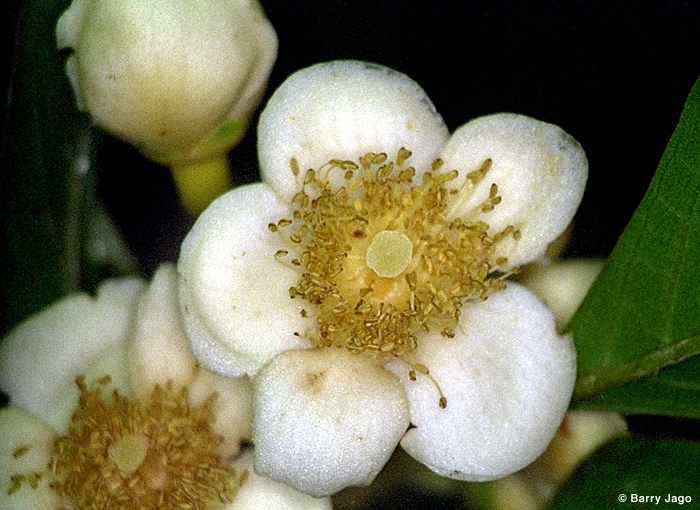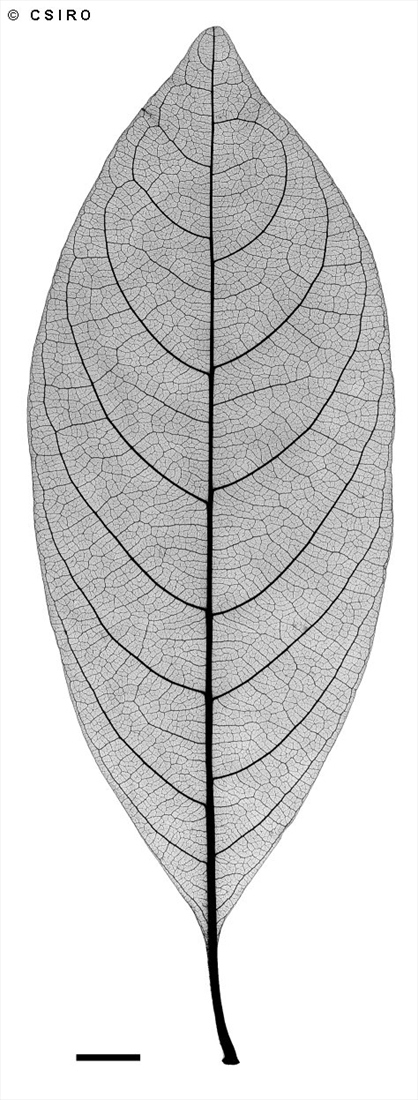Australian Tropical Rainforest Plants - Online edition
Rhodomyrtus macrocarpa Benth.






Bentham, G. (1867) Flora Australiensis 3: 273. Type: Queensland. Albany Island, W. Hill; Rockingham Bay, Dallachy.
Wannakai; Native Loquat; Finger Cherry; Cooktown Loquat; Cherry, Finger
Seldom exceeding 20-30 cm dbh. Outer dead bark pale brown, often layered. Cambial layer may turn purple on exposure.
Inflorescence not exceeding the leaves, usually approximating the petioles. Flowers quite large. Calyx lobes about 2-2.5 mm long, glabrous or pubescent on both the inner and outer surfaces. Petals variable, orbicular to reniform, about 10-16 x 12-15 mm, glabrous. Ovary apex puberulent. Stigma relatively large and peltate.
Infructescence not exceeding the leaves. Calyx lobes persistent at the apex of the fruit. Fruits usually +/- cylindrical, about 25-60 x 15-25 mm. Seeds flattened, patelliform, about 10 mm diam. Embryo spirally coiled, cotyledons narrower than the radicle.
Cotyledons oblong or oblong-obovate, about 4-5 mm long. At the tenth leaf stage: leaf blade elliptic to obovate, upper surface hairy along midrib; oil dots very small, sparse, visible only with a lens; petiole, stem and terminal bud clothed in pale, prostrate hairs. Seed germination time 39 to 44 days.
Occurs in CYP, NEQ and CEQ. Altitudinal range from sea level to 800 m. Grows as an understory tree in well developed rain forest but more commonly encountered in drier, more seasonal rain forest and monsoon forest. Also occurs in New Guinea and the Aru Islands.
The fruits of this species are know as Finger Cherries. Many people eat these fruit without suffering any ill effects. However, there is a considerable amount of well documented evidence to indicate that the fruits can cause serious problems e.g. blindness, particularly in children Everist (1974) has summarized the evidence and his final words on this species should be heeded 'It is safest to refrain from eating the fruits at any stage.'
This is an ornamental species both in flower and fruit, but its cultivation is not recommended.





